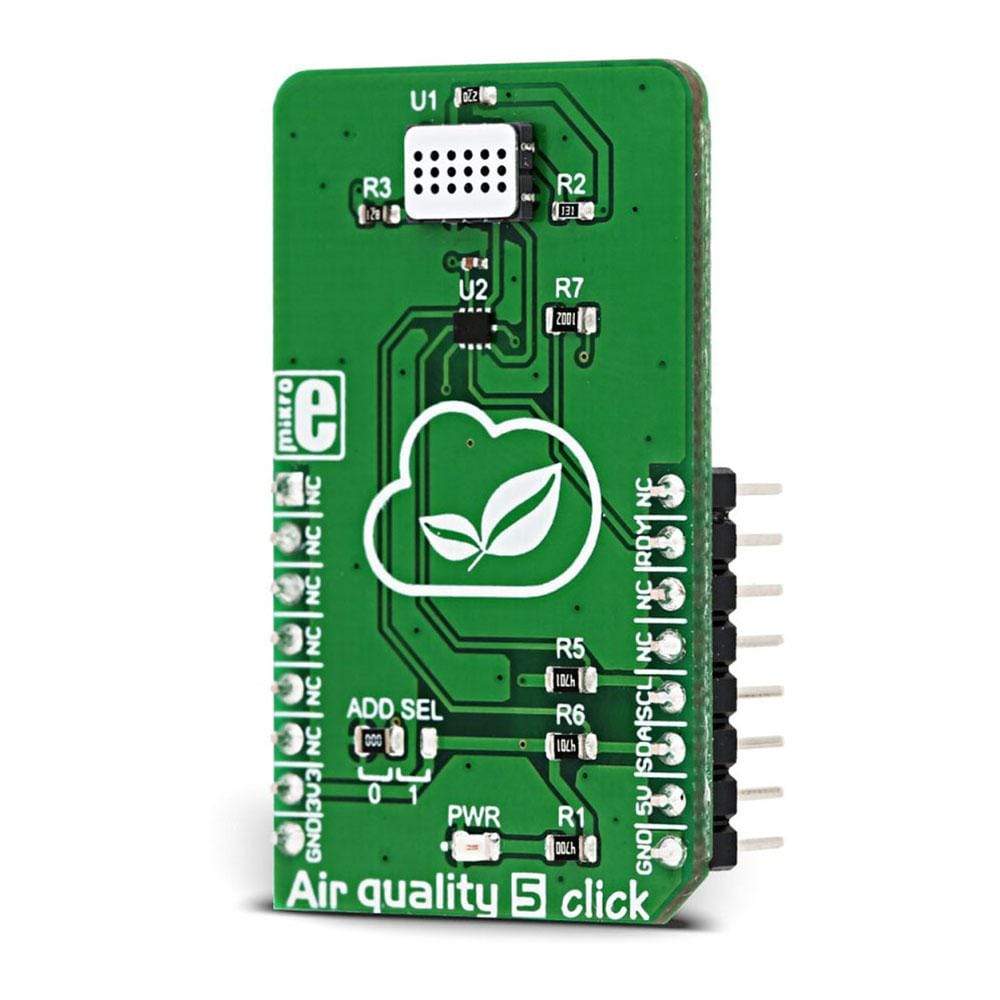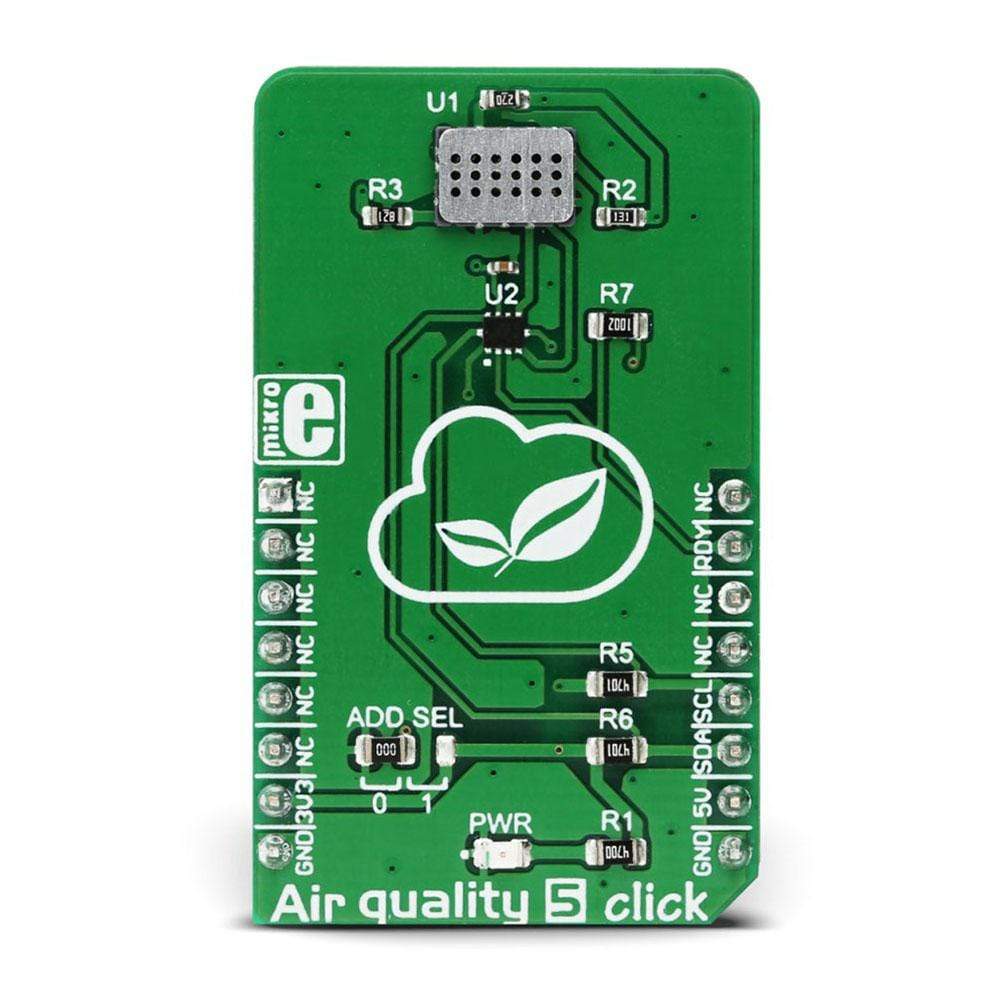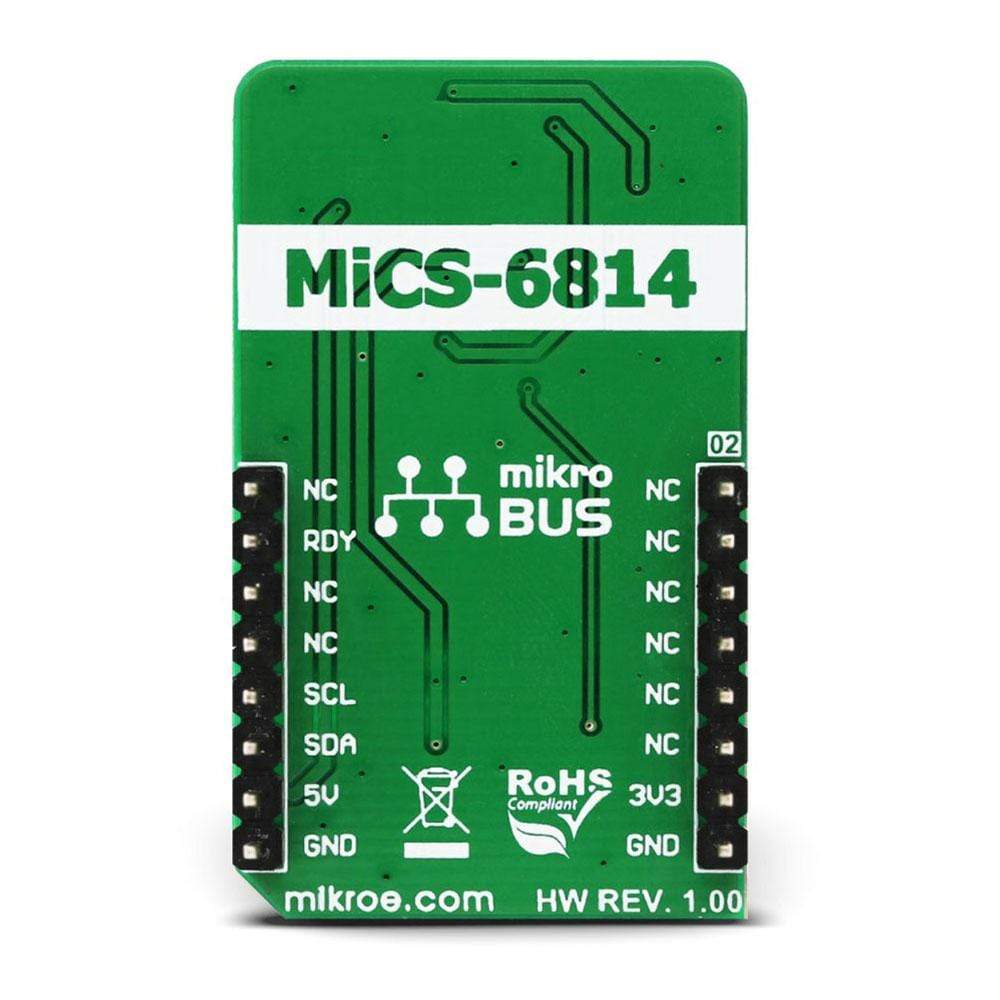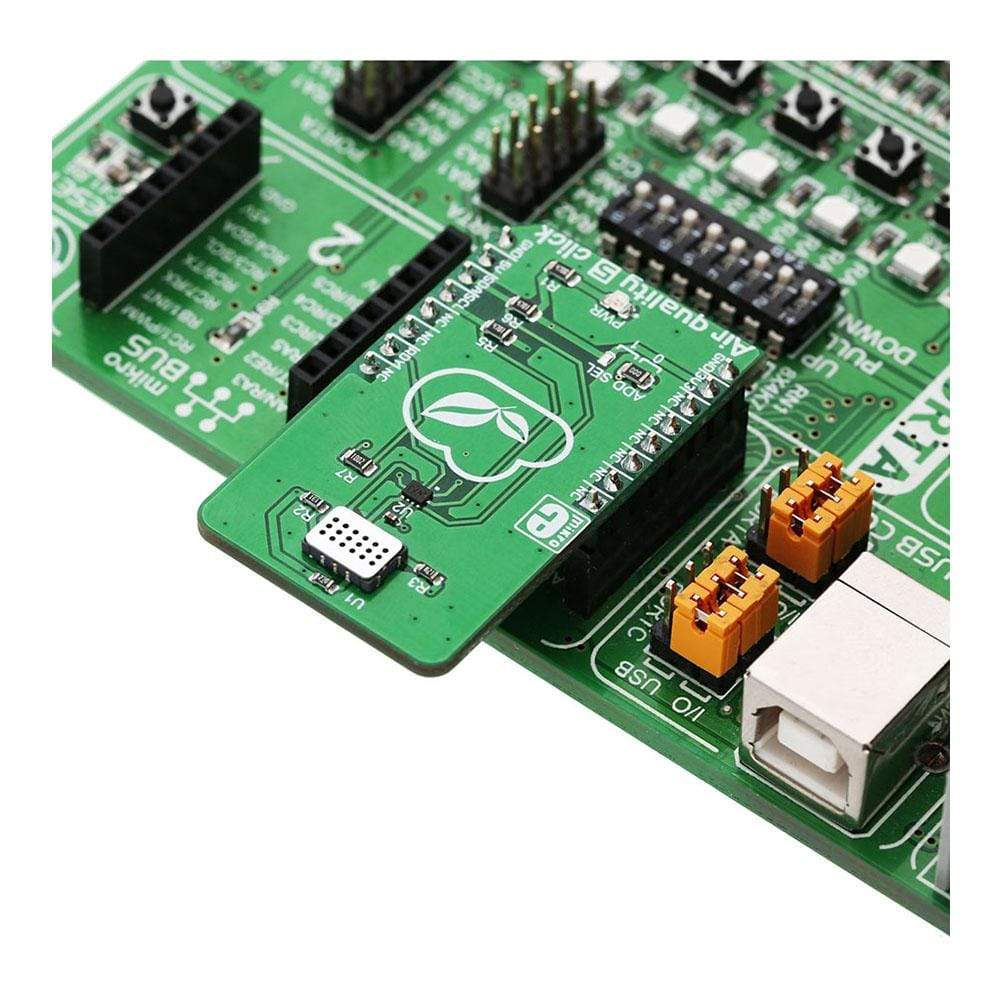



Overview
The Air Quality 5 Click Board™ is a triple MOS sensor on a single Click Board™, which can detect gas pollution for a number of different gases. The onboard sensor is specially designed to detect the pollution from automobile exhausts, as well as the gas pollution from the industrial or agricultural industry.
The Air Quality 5 Click Board™ uses the MiCS-6814, a compact MOS sensor with three fully independent sensing elements in one package: RED sensor, OX sensor, and NH3 sensor. Each of these sensors reacts with the specific type of gases, providing gas readings that including carbon monoxide (CO), nitrogen dioxide (NO2), ethanol (C2H5OH), hydrogen (H2), ammonia (NH3), methane (CH4), propane (C3H8), and isobutane (C4H10). Measurement conversion is handled by the onboard 12-bit ADC converter and it is available via the I2C interface.
Downloads
Das Air Quality 5 Click Board™ ist ein Dreifach-MOS-Sensor auf einem einzelnen Click Board™, der die Gasverschmutzung für eine Reihe verschiedener Gase erkennen kann. Der integrierte Sensor ist speziell dafür ausgelegt, die Verschmutzung durch Autoabgase sowie die Gasverschmutzung durch die Industrie oder Landwirtschaft zu erkennen.
Das Air Quality 5 Click Board™ verwendet den MiCS-6814, einen kompakten MOS-Sensor mit drei vollständig unabhängigen Sensorelementen in einem Gehäuse: RED-Sensor, OX-Sensor und NH3-Sensor. Jeder dieser Sensoren reagiert mit der spezifischen Art von Gasen und liefert Gaswerte, darunter Kohlenmonoxid (CO), Stickstoffdioxid (NO2), Ethanol (C2H5OH), Wasserstoff (H2), Ammoniak (NH3), Methan (CH4), Propan (C3H8) und Isobutan (C4H10). Die Messwertumwandlung erfolgt über den integrierten 12-Bit-ADC-Konverter und ist über die I2C-Schnittstelle verfügbar.
| General Information | |
|---|---|
Part Number (SKU) |
MIKROE-3056
|
Manufacturer |
|
| Physical and Mechanical | |
Weight |
0.019 kg
|
| Other | |
Country of Origin |
|
HS Code Customs Tariff code
|
|
EAN |
8606018713172
|
Warranty |
|
Frequently Asked Questions
Have a Question?
Be the first to ask a question about this.




